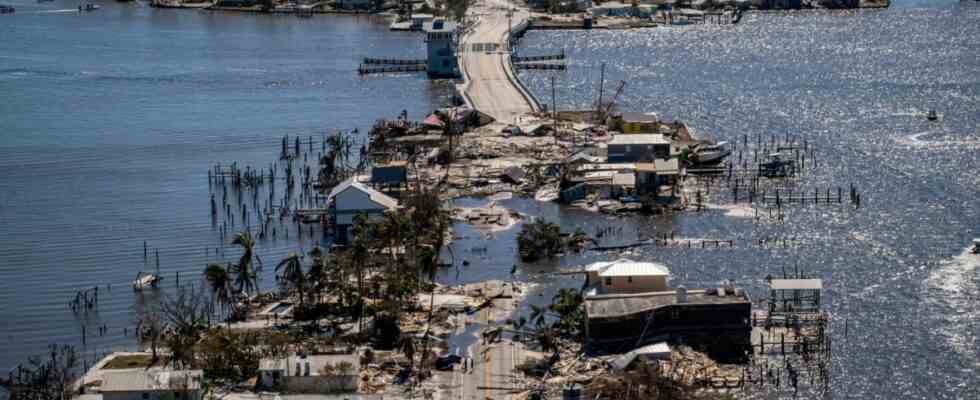It’s a terrible record, again. At least 58 people died in Florida alone as a result of hurricane “Ian”, which left a path of destruction in its wake last Thursday and caused storm surges and heavy rain. Most of the victims apparently drowned. An elderly couple died at home because the ventilators stopped working due to the power outage. At least 750,000 homes in the United States were or are still without power. In Cuba, whose western tip was hit by the storm on Wednesday, power was temporarily lost to all 11.3 million residents.
For insurers and reinsurers, “Ian” means they are dealing with one of the worst storm losses in US history. Comparable to the “Katrina” disaster, which caused insured losses of $65 billion at the time, a large part of which was due to the flooding of the city of New Orleans. At today’s prices, that would be $89 billion.
“Ian” could be similarly expensive, believe special companies that assess the possible consequences of catastrophes and the actual damage on behalf of insurers. The range of estimates from these catastrophe modelers is wide, ranging from $12 billion to $80 billion, the latter figure given by the renowned analysis company RMS.
The latest estimate: well over $100 billion in damage
The latest estimate comes from Karen Clark & Company (KCC) and puts it at $63 billion, but does not include damage to boats and ships and the state’s flood insurance program. “Total economic damage will be well in excess of $100 billion, including uninsured property, damage to infrastructure and other cleanup and restoration costs,” KCC said.
On the one hand, the fact that hurricanes cause such great damage is due to their increasing strength, which many experts believe is a consequence of climate change. On the other hand, the increasing development of expensive residential buildings and hotels on properties at risk from storms plays a major role.
It is already clear that there will be a lot of controversy about whether damage was caused by the storm or by flooding. Because many properties are insured against storm damage, but not against water damage. US homeowners typically either protect their homes through the state flood program or do not protect their properties at all: only 10 percent have a flood policy. There are still numerous lawsuits about damages from Hurricane “Irma”, which raged in the USA in 2017.
Some insurers will probably have to file for bankruptcy
In any event, Storm Ian, which first hit Florida and then South Carolina, will cost insurers and reinsurers worldwide and have serious consequences for insurers operating in Florida. The reinsurer Munich Re does not yet see itself in a position to make a serious estimate, but the analysis company Corelogic expects many insolvencies in the industry. “A record number of homes and lots have been lost due to the intense and destructive nature of Hurricane Ian,” said Corelogic analyst Tom Larsen. His forecast: The storm will change the real estate industry and urban infrastructure forever. “Insurers will go bankrupt, homeowners will default, and insurance coverage will be harder to come by in areas like Florida.”
The hurricane hit insurers in Florida in an already difficult situation. Large US insurers such as State Farm and Allstate have sharply reduced their offers for building owners there after high claims in previous years. Some smaller companies had to file for bankruptcy, while others increased their premiums sharply and reduced their coverage. “Ian” will further aggravate the situation. The reinsurers, who in turn offer insurers protection against catastrophes, are also withdrawing.
Much of the private home insurance market is dominated by Florida-only providers with little opportunity to diversify risk. They suffer particularly badly from the storm damage. The Citizens Property Insurance Corporation is one of the largest regional providers. The local companies are reinsured via the Florida Hurricane Catastrophe Fund, but also via private providers, above all Gen Re, Lloyd’s of London, Munich Re and Swiss Re, according to an analysis by the rating agency Moody’s.

